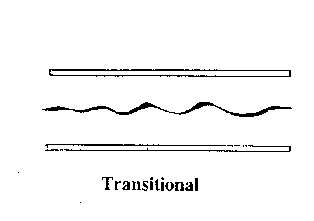Title: The Difference between Mulberry Silk and Tussah Silk
The difference between mulberry silk and tussah silk lies in their production process and the type of silkworm used. Mulberry silk is produced by the Bombyx mori, a species of silkworm that feeds on mulberry leaves. The silk produced by this species is characterized by its long, strong, and smooth fibers. On the other hand, tussah silk is produced by the Antheraea pernyi, a different species of silkworm that feeds on various leaves, including those of the tussah tree. The silk produced by this species is characterized by its shorter, weaker, and rough fibers. Additionally, the production process of these two types of silk is different, with mulberry silk being produced in a more controlled and regulated environment.
Silk, one of the most celebrated natural fibers, is renowned for its elegance, durability, and versatility. It has been used for centuries in a variety of applications, from clothing to decorative arts. However, not all silk is created equal, and there are significant differences between the two main types of silk: mulberry silk and tussah silk.

Origin and Production
Mulberry silk, also known as sericulture silk, is produced by the silkworm, Bombyx mori. This species of silkworm is reared exclusively on mulberry leaves, hence the name. The process of making mulberry silk involves carefully selecting and cultivating the mulberry trees, as well as managing the silkworms under strict conditions to ensure their health and productivity.
On the other hand, tussah silk, also known as wild silk orophila silk, is produced by the silkworm, Antheraea pernyi. This silkworm is not as domesticated as the Bombyx mori and is often found in the wild, feeding on a variety of plants. The production of tussah silk involves catching the worms in the wild and then spinning their cocoons into silk.
Quality and Texture
One of the most notable differences between mulberry silk and tussah silk lies in their quality and texture. Mulberry silk is generally considered to be of higher quality, with a smoother and more delicate texture. This is due to the fact that Bombyx mori silkworms are able to spin longer and more continuous fibers when fed on mulberry leaves, resulting in a stronger and more uniform silk thread.

On the other hand, tussah silk tends to have a coarser and more uneven texture. This is because Antheraea pernyi silkworms are not as well-fed as their Bombyx mori counterparts, resulting in shorter and weaker fibers that are more prone to breaking. However, some people also find the unique texture of tussah silk to be its charm.
Color and Appearance
Another difference between mulberry silk and tussah silk lies in their color and appearance. Mulberry silk is typically a light to medium brown color, with a natural sheen that adds to its elegance. The color of tussah silk, on the other hand, can vary widely, ranging from light tan to deep brown or even black. This variation in color is due to the fact that Antheraea pernyi silkworms are not as uniform in their coloring as Bombyx mori silkworms.
Cost and Availability
The cost and availability of mulberry silk and tussah silk also differ significantly. Mulberry silk is generally more expensive than tussah silk, primarily due to its higher quality and more intensive production process. However, it is also more widely available, as it has been extensively cultivated for centuries in many parts of the world.

On the other hand, tussah silk is not as common or as widely available as mulberry silk. This is primarily because it is not as well-studied or as extensively cultivated as its counterpart. However, its unique texture and appearance have made it increasingly popular in recent years, particularly among those looking for something unique and different from conventional mulberry silk.
In conclusion, while both mulberry silk and tussah silk have their own unique characteristics and advantages, it is important to be aware of their differences before making a purchase or using them for a specific application. Whether you are looking for something elegant and luxurious or something unique and different, either type of silk can be a great choice when used in the right context.
Articles related to the knowledge points of this article:
Top 10 Mens Down Jacket Brands to Keep You Warm This Winter
Title: How to Choose the Perfect Length of Ties for Different Occasions
Unique Winter Coat: A Fashion Statement for the Cold Weather
Feather-Filled Insulated Jacket: The Ultimate Cold-Weather Clothing



